Input interpretation

sec-butanol
Chemical names and formulas
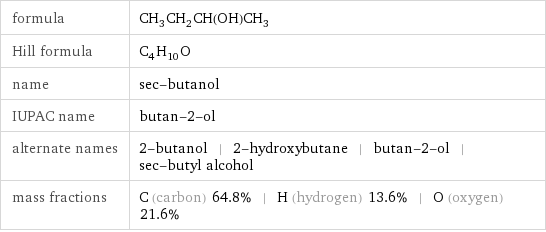
formula | CH_3CH_2CH(OH)CH_3 Hill formula | C_4H_10O name | sec-butanol IUPAC name | butan-2-ol alternate names | 2-butanol | 2-hydroxybutane | butan-2-ol | sec-butyl alcohol mass fractions | C (carbon) 64.8% | H (hydrogen) 13.6% | O (oxygen) 21.6%
Lewis structure

Draw the Lewis structure of sec-butanol. Start by drawing the overall structure of the molecule: Count the total valence electrons of the carbon (n_C, val = 4), hydrogen (n_H, val = 1), and oxygen (n_O, val = 6) atoms: 4 n_C, val + 10 n_H, val + n_O, val = 32 Calculate the number of electrons needed to completely fill the valence shells for carbon (n_C, full = 8), hydrogen (n_H, full = 2), and oxygen (n_O, full = 8): 4 n_C, full + 10 n_H, full + n_O, full = 60 Subtracting these two numbers shows that 60 - 32 = 28 bonding electrons are needed. Each bond has two electrons, so the above diagram has all the necessary bonds. There are 14 bonds and hence 28 bonding electrons in the diagram. Lastly, fill in the remaining unbonded electrons on each atom. In total, there remain 32 - 28 = 4 electrons left to draw: Answer: | |
3D structure
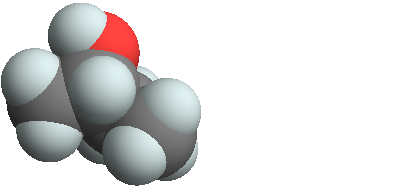
3D structure
Basic properties
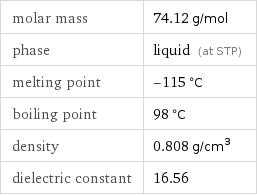
molar mass | 74.12 g/mol phase | liquid (at STP) melting point | -115 °C boiling point | 98 °C density | 0.808 g/cm^3 dielectric constant | 16.56
Hydrophobicity and permeability properties

experimental LogP hydrophobicity | 0.61 predicted LogP hydrophobicity | 0.66 predicted LogS | 0.42
Basic drug properties

approval status | experimental | small molecule
Liquid properties (at STP)
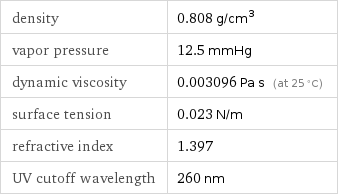
density | 0.808 g/cm^3 vapor pressure | 12.5 mmHg dynamic viscosity | 0.003096 Pa s (at 25 °C) surface tension | 0.023 N/m refractive index | 1.397 UV cutoff wavelength | 260 nm
Units
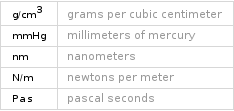
Thermodynamic properties
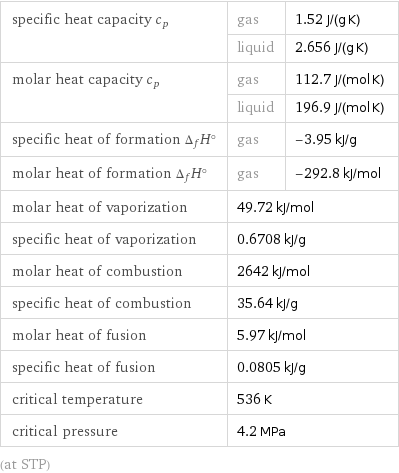
specific heat capacity c_p | gas | 1.52 J/(g K) | liquid | 2.656 J/(g K) molar heat capacity c_p | gas | 112.7 J/(mol K) | liquid | 196.9 J/(mol K) specific heat of formation Δ_fH° | gas | -3.95 kJ/g molar heat of formation Δ_fH° | gas | -292.8 kJ/mol molar heat of vaporization | 49.72 kJ/mol | specific heat of vaporization | 0.6708 kJ/g | molar heat of combustion | 2642 kJ/mol | specific heat of combustion | 35.64 kJ/g | molar heat of fusion | 5.97 kJ/mol | specific heat of fusion | 0.0805 kJ/g | critical temperature | 536 K | critical pressure | 4.2 MPa | (at STP)
Chemical identifiers
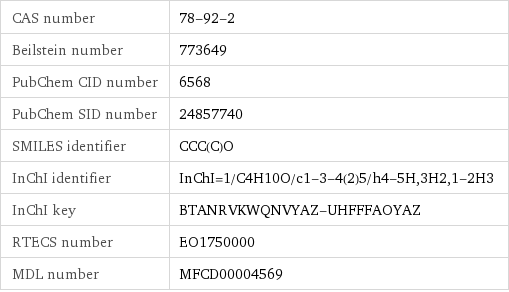
CAS number | 78-92-2 Beilstein number | 773649 PubChem CID number | 6568 PubChem SID number | 24857740 SMILES identifier | CCC(C)O InChI identifier | InChI=1/C4H10O/c1-3-4(2)5/h4-5H, 3H2, 1-2H3 InChI key | BTANRVKWQNVYAZ-UHFFFAOYAZ RTECS number | EO1750000 MDL number | MFCD00004569
NFPA label

NFPA label
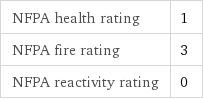
NFPA health rating | 1 NFPA fire rating | 3 NFPA reactivity rating | 0
Safety properties

flash point | 26.67 °C autoignition point | 390 °C lower explosive limit | 1.4% (concentration in air) upper explosive limit | 9.8% (concentration in air)

DOT hazard class | 3 DOT numbers | 1120
Toxicity properties
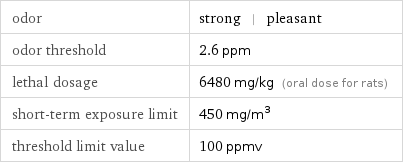
odor | strong | pleasant odor threshold | 2.6 ppm lethal dosage | 6480 mg/kg (oral dose for rats) short-term exposure limit | 450 mg/m^3 threshold limit value | 100 ppmv

probable lethal dose for man | 1 L (liter) long-term exposure limit | 300 mg/m^3 (over 8 hours) RTECS classes | reproductive effector